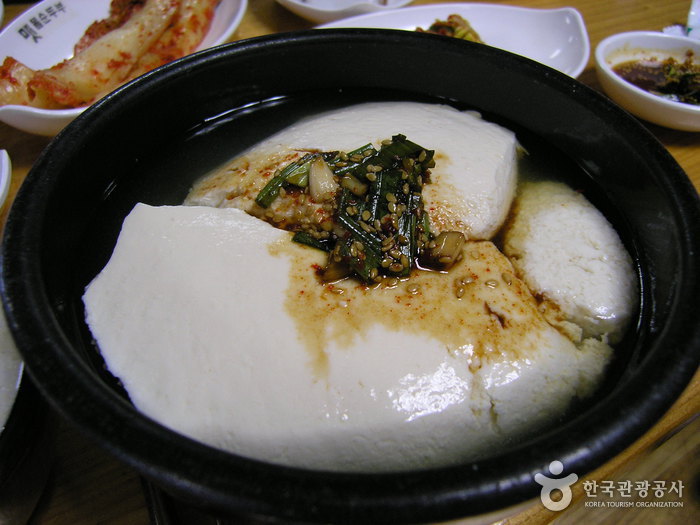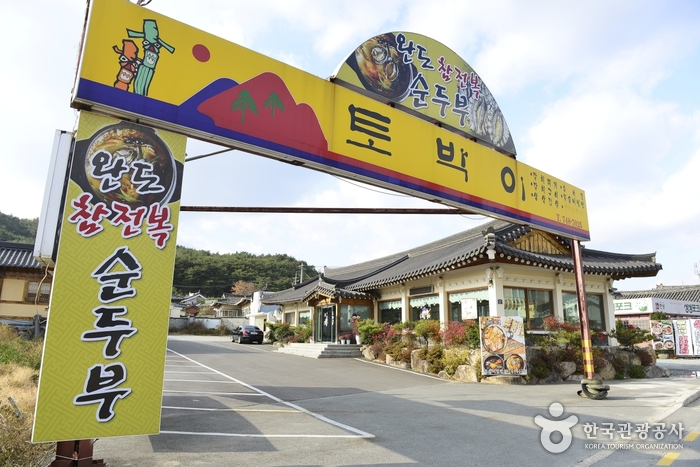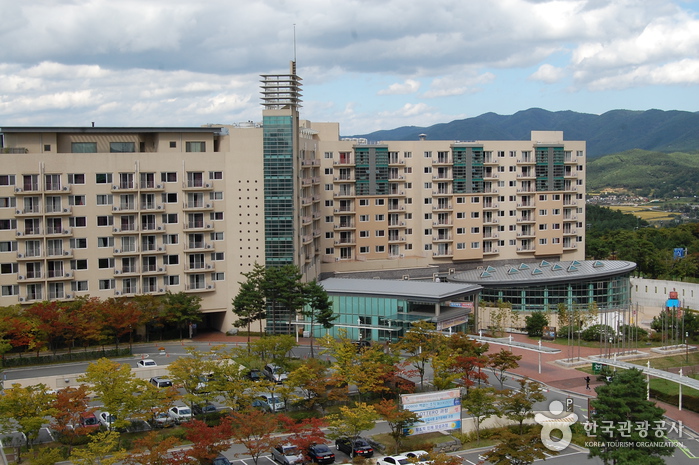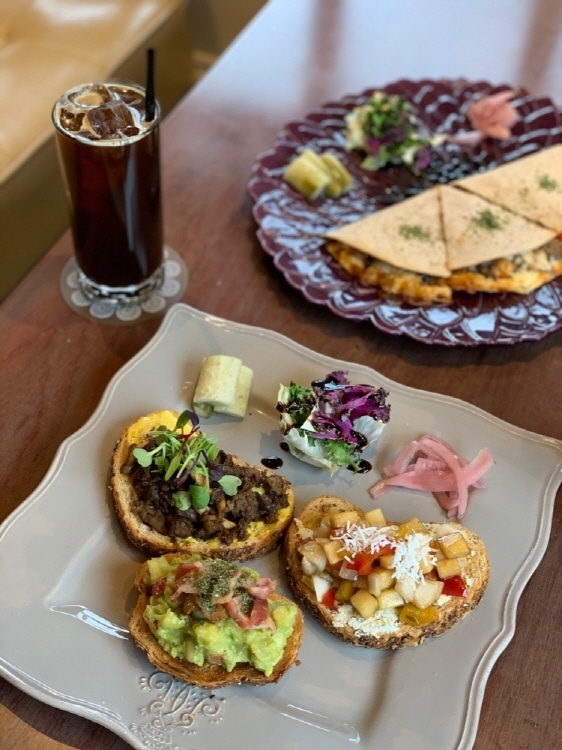Maetdol sundubu (맷돌순두부)
13.5Km 35612 2024-02-23
7 Bukgun-gil, Gyeongju-si, Gyeongsangbuk-do
054-745-2791
Maetdol sundubu, located at the entrance of the Bomun Tourist Complex in Gyeongju, is renowned for its homemade dubu (bean curd) dishes, crafted using domestic soybeans. The highlight of its menu is the maetdol sundubu jjigae (stone-ground soft bean curd jjigae), a savory concoction featuring sundubu (soft bean curd), shrimp, and clams. The dish is typically served in a ttukbaegi (hot pot), and customers have the option to add a raw egg to the boiling mixture. This sundubu restaurant is popular for its delicately flavored dishes.
Tobaki (토박이)
13.5Km 10375 2017-01-03
21, Bukgun-gil, Gyeongju-si, Gyeongsangbuk-do
+82-54-748-7025
"Tobaki" serves exquisite Galchi-jjigae, Galchi-gui, and Dolsotbap, and has designated as a signature restaurant in the Gyeongju region. The restaurant welcomes many regulars due to its high standards in service and inexpensive menus.
Bomun Golf Club (보문골프클럽)
13.7Km 12858 2021-04-16
182-14, Bomun-ro, Gyeongju-si, Gyeongsangbuk-do
+82-54-745-1680
Bomun Golf Club is located in the historic cultural city of Gyeongju. Situated within Bomun Tourist Complex, visitors can enjoy golf and many attractions.
Hanwha Resort - Gyeongju (한화리조트 경주)
13.8Km 15062 2020-09-08
182-27, Bomun-ro, Gyeongju-si, Gyeongsangbuk-do
+82-54-777-8400
Hanwha Resort Hotels & Resorts is a leading hospitality & leisure company with the highest number of condominiums and golf courses across Korea. Hanwha Resort in Gyeongju Bomun Complex (a World Heritage site) has a wide range of subsidiary facilities including banquet halls, seminar rooms, a hot spring sauna, bicycle rentals, a bowling alley, an outdoor swimming pool, supermarket, singing room and more. There are a total of four designated guestrooms for people with disabilities, with rooms equipped with beds in the annex building. All rooms are equipped with up-to-date amenities while having a simple design that is always ready to welcome the visitors.
Songdaemal Lighthouse (송대말 등대)
14.0Km 25094 2024-02-08
18-94 Cheoksa-gil, Gampo-eup, Gyeongju-si, Gyeongsangbuk-do
Songdaemal Lighthouse was constructed for maritime safety off the coast of Gampo Port. Its name "Songdaemal" signifies "the end of the pine trees". It was initially built as a manned lighthouse and underwent a comprehensive overhaul in 2001. The renovation was designed to resemble the three-story stone pagoda at the Gameunsa Temple Site. Near the lighthouse is the Songdaemal Light Exhibition, displaying information about the lighthouse and various sea-related materials. Additionally, visitors can enjoy a leisurely stroll on the trail in front of the lighthouse. This location is also renowned for its stunning views of the sunrise over the east coast.
Surime (수리뫼 [한국전통음식체험교육원])
14.0Km 22568 2021-01-28
110-32, Poseok-ro, Gyeongju-si, Gyeongsangbuk-do
+82-54-748-2507
Surime is a traditional Korean food experience center owned and operated by Park Mi-suk who studied under Hwang Hye-seong, holder of the Intangible Cultural Property No. 38, Royal Cuisine of the Joseon Dynasty. The institute operates various traditional cooking experience programs open to everyone. The institute shares the walls of the Choi family home, designated as a cultural asset, spanning over 1,652.89 ㎡ with well-preserved hanok structures built over 100 years ago.
Surime (수리뫼)
14.0Km 10130 2019-11-21
110-32, Poseok-ro, Gyeongju-si, Gyeongsangbuk-do
+82-54-748-2507
Surime is surrounded by Gyeongju Namsan Mountain, a designated UNESCO World Cultural Heritage Site. Surime serves royal cuisine from the Joseon dynasty, prepared by royal cuisine expert Park Misuk. All dishes are prepared with fresh ingredients grown in the Surime garden for a pure, natural taste. In addition to being a restaurant, guests can also participate in various food programs.
La Fleur (라플레르)
14.1Km 0 2024-02-28
421-11 Alcheonbuk-ro, Gyeongju-si, Gyeongsangbuk-do
La Fleur is a hanok café located near the UNESCO World Heritage Site Hwangnyongsa Temple. It offers a selection of beverages and simple meals like bibimbap and its signature menu item, avocado myeongnan bibimbap (avocado and pollack roe bibimbap). The café boasts a beautifully curated garden adorned with various trees and ornaments, while the interior is adorned with potted plants and decorative items.
Yongsan Sashimi Restaurant (용산회식당)
14.2Km 5070 2024-03-04
112 Poseok-ro, Naenam-myeon, Gyeongju-si, Gyeongsangbuk-do
054-748-2119
Situated near Cheollyongsa Temple in Gyeongju, Yongsan Hoe Restaurant is exclusively dedicated to hoedeopbap (raw fish bibimbap). Customers are served a generous portion of hoe (raw fish) over rice in a large brass bowl. The topping's hoe is freshly mixed with the catch of the day, varying seasonally with options like herring, grey mullet, gizzard shad, and plaice, all sourced from Guryongpo Port in Pohang. Due to its popularity, there is often a waiting line, so obtaining a numbered ticket to queue is recommended.
The Divine Bell of King Seongdeok (성덕대왕신종)
14.3Km 25673 2020-04-04
186, Iljeong-ro, Gyeongju-si, Gyeongsangbuk-do
+82-54-740-7500
The Divine Bell of King Seongdeok, the largest Korean bell preserved, stands 3.75-meter tall, has a lip diameter of 2.27 meters, and is 11 to 25 entimeters wide. In 1997, Gyeongju National Museum weighed it at 18.9 tons. The bell was cast to pay tribute to the memory of King Seongdeok. It was completed in 771 and named ‘The Divine Bell of King Seongdeok.’ However, because the bell was installed at Bongdeoksa Temple, it has also been called the Bell of Bongdeoksa.
The bell is also known as the Emile Bell, a name derived from an ancient legend in which a child was sacrificed in order to give sound to the bell, whose echoes of ‘em-ee-leh’ resemble the traditional Korean word for "mommy."
The tubular sound pipe at the top of the bell that helps the sound reverberate is a unique feature that can be found only in Korean bells. The yongnyu, which serves as a loop to hang the bell, has been decorated to resemble a dragon’s head. A band of arabesque patterns can be found at the shoulder, and the striking point of the bell is in the shape of a lotus flower.
The magnificent design and inscription methods used in this bell exemplify the artisan's craftmanship of the Unified Silla period. The bell is also inscribed with over one thousand Chinese characters, and its beauty and integrity have been meticulously preserved despite the passage of over 1,300 years.




![Surime (수리뫼 [한국전통음식체험교육원])](http://tong.visitkorea.or.kr/cms/resource/98/1967598_image2_1.jpg)

 English
English
 한국어
한국어 日本語
日本語 中文(简体)
中文(简体) Deutsch
Deutsch Français
Français Español
Español Русский
Русский